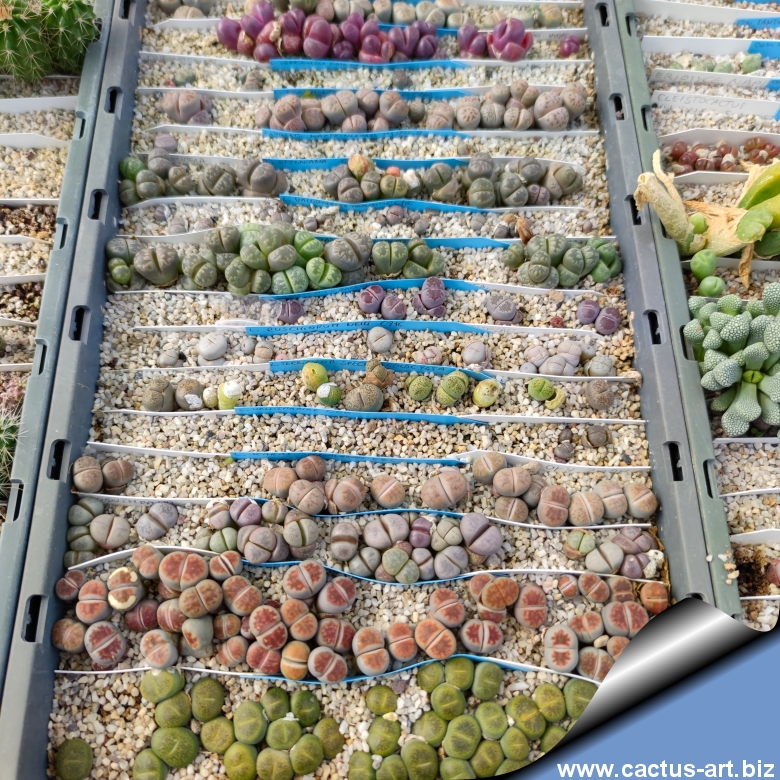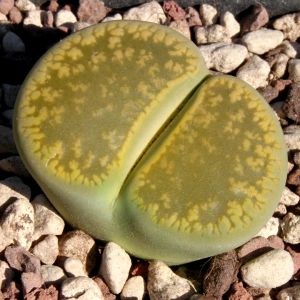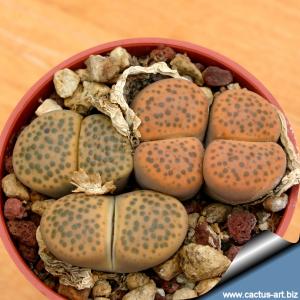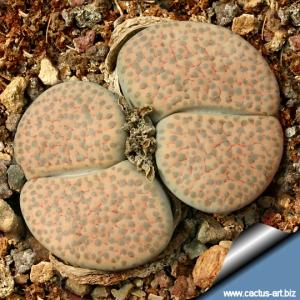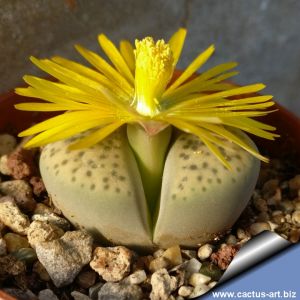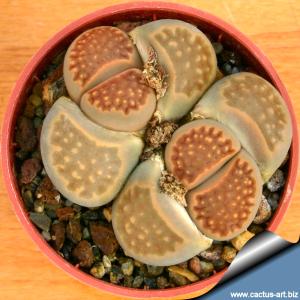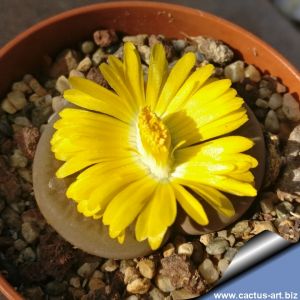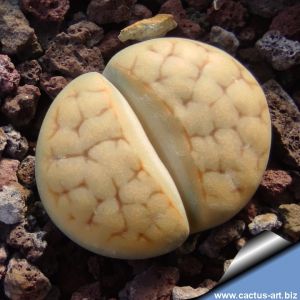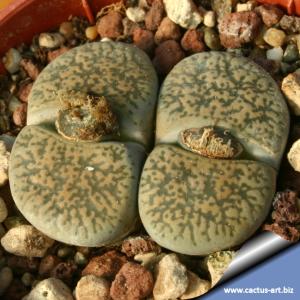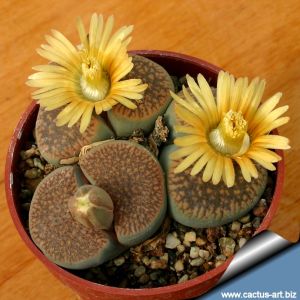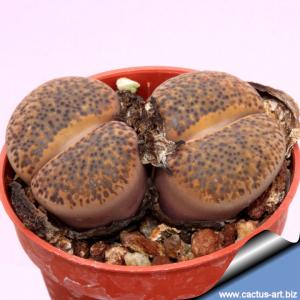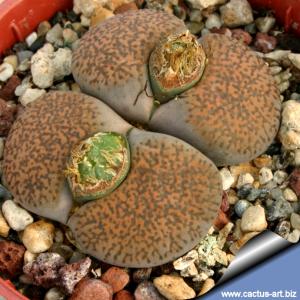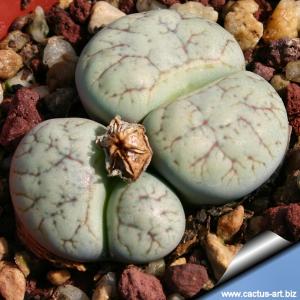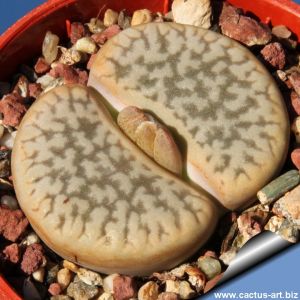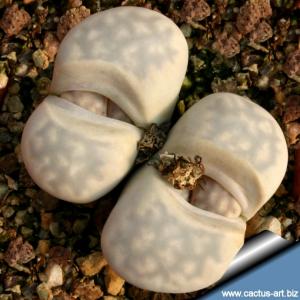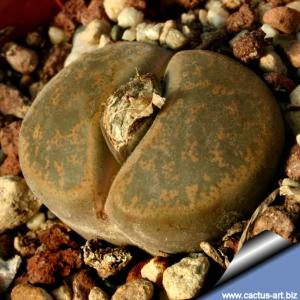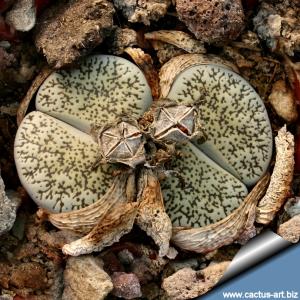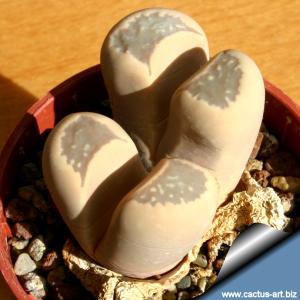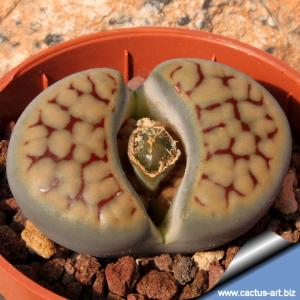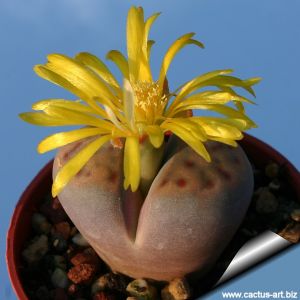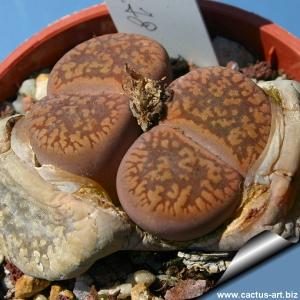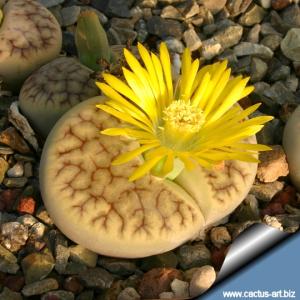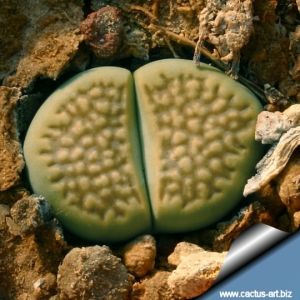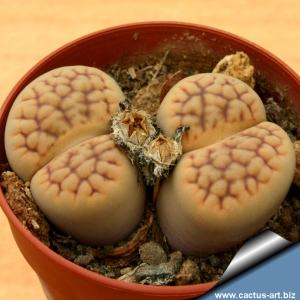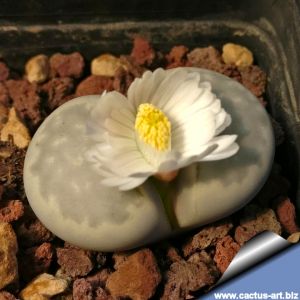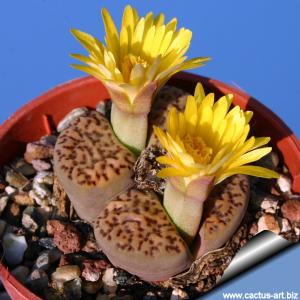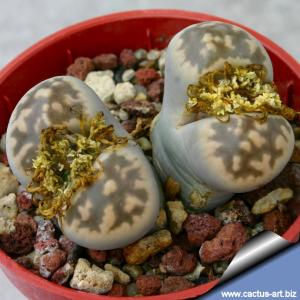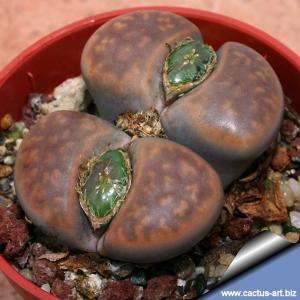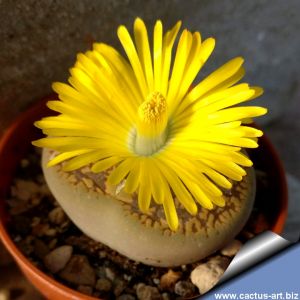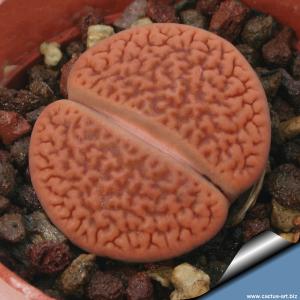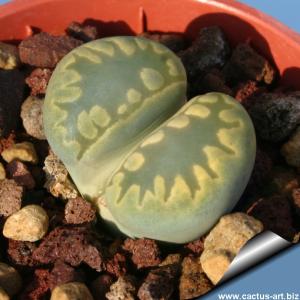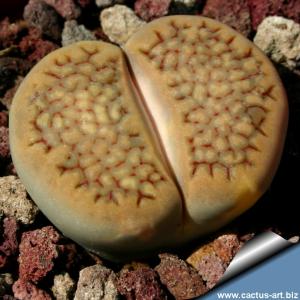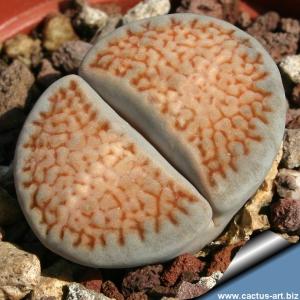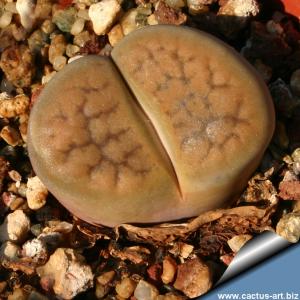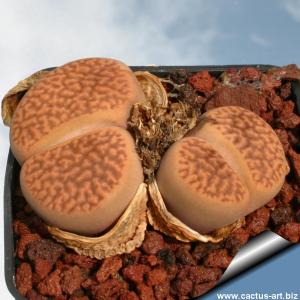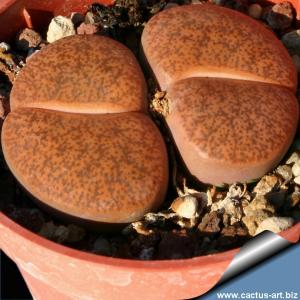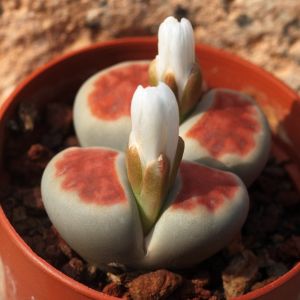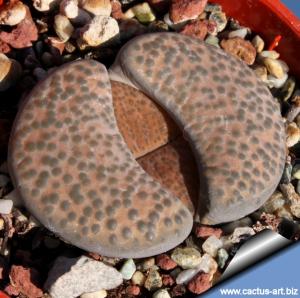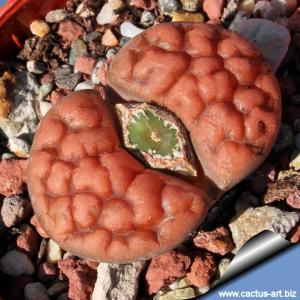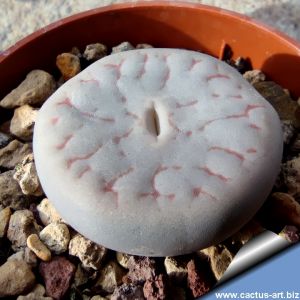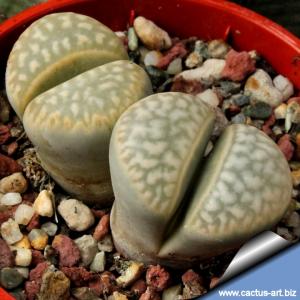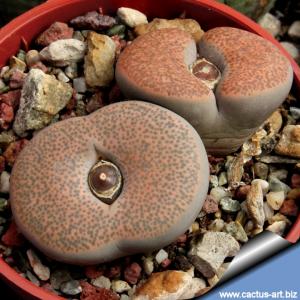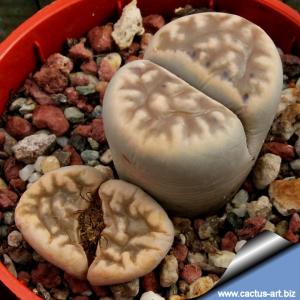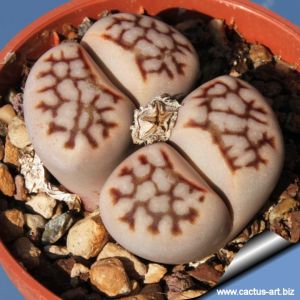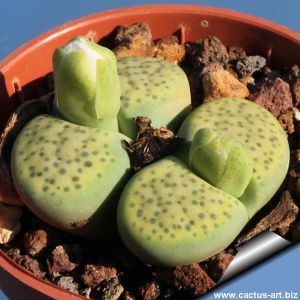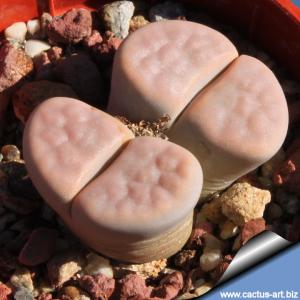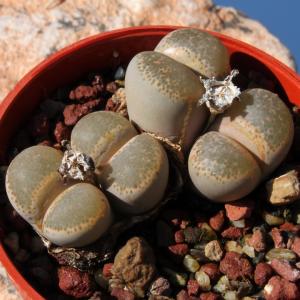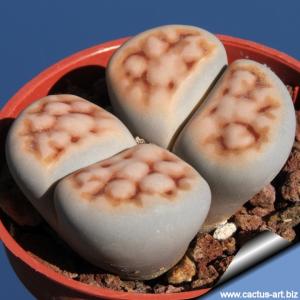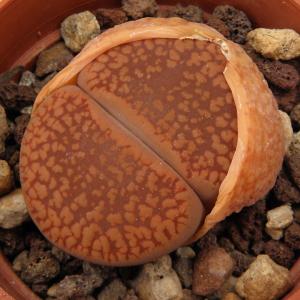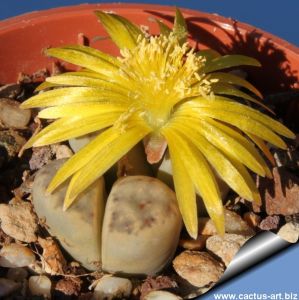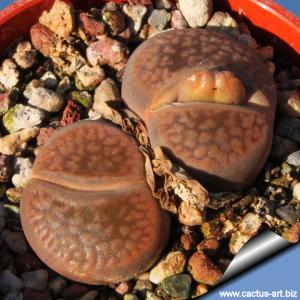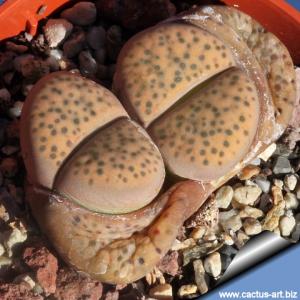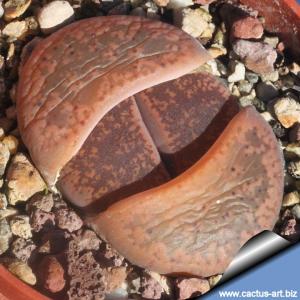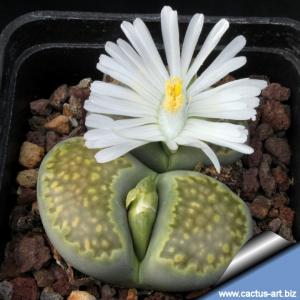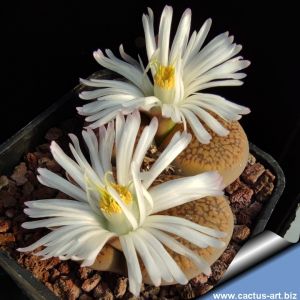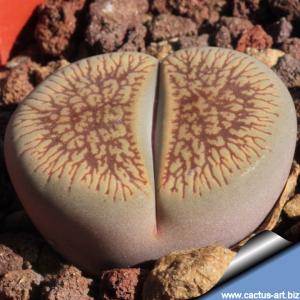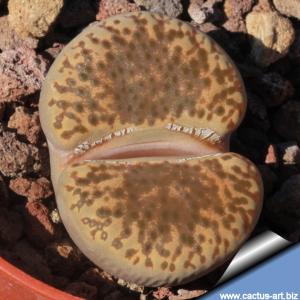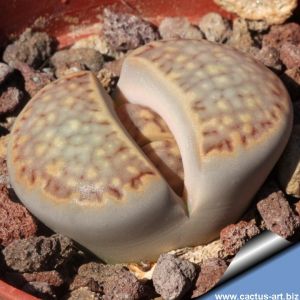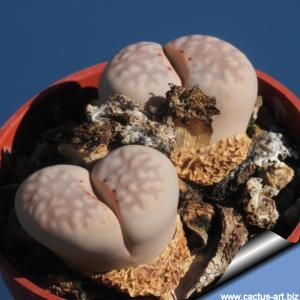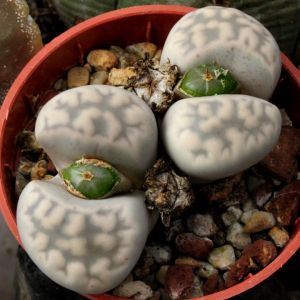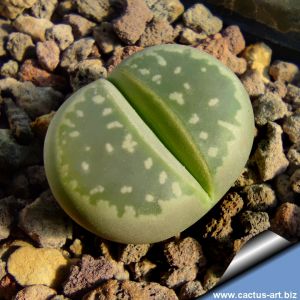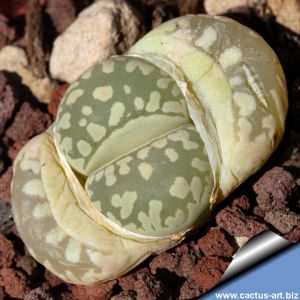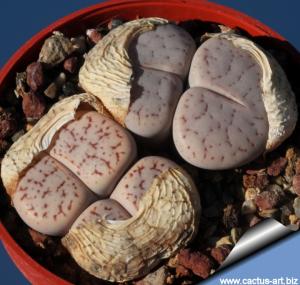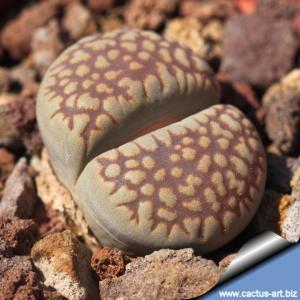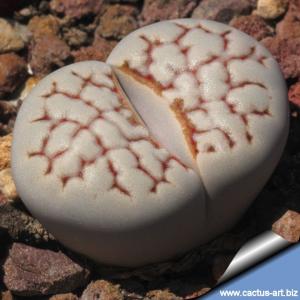-
1
Green/yellow body and yellow flowers.
-
2
Body ranging from ochre yellow to brick red, marked with extra-large dark dots.
-
3
Pale form with grey body and pinkish-milky-grey top with (usually) a few thin red lines and grey dots.
-
4
Very peculiar small convex form with a relatively smooth surface without the large raised dusky dots which characterize the type variety.
-
5
Reticulated upper surface in grey-orange, ochre, and red-brown tones. Produces white flowers in autumn.
-
6
-
7
Rough orange rocks.
-
8
-
9
-
10
-
11
Fne speckles and lines.
-
12
Very rare and beautiful - tiny with clear deep and dark lines.
-
13
Var. susannae is distinguished by a less reticulate top in various shades of obscurely translucent grey-green, greenish grey, brown, or orange-brown, sometimes more intensely colored along the margins. Yellow flowers in autumn.
-
14
They have a nearly white stonelike body and top with pale grey blushes, some specimens are opaque whitish-grey and almost uniform in colour. They produce a single white daisy-like flower that emerges from the fissure from mid-summer through Autumn.
-
15
-
16
Grey black top, intricate. Very pretty lines.
-
17
Raised grey-pink lobes marked by zigzagging lines.
-
18
This is one of the easiest species. Some people consider it one of the most tolerant of overwatering.
-
19
mustardy tops .
-
20
-
21
Warm orange colors, truncate.
-
22
Beautiful! Light brown window with thin dark brown lines - one of the best!
-
23
Intermediate between L. salicola and L. halli it has a large fine reticulate brown windows.
-
24
Pale green freak.
-
25
Nice form of Lithops hookeri with rich orange coloration characterized by large island and coarse network of grooves on the top face. Flowers are Yellow in late summer.
-
26
The more distinctive feature of this "pallid" greyish-white plant is a brown 'lip-smear' along the inner margins. The lip-smear occurs occasionally as a narrow edging or lining all along the outer margins.
-
27
Medium-small Lithops. The face is opaque slightly rugose with channels reduced to mini-windows. Shoulders, margins and islands orange-brown. Windows and channels transluscent reddish-brown with dull blood-red rubrications.
-
28
Very wide jagged windows.
-
29
A dark form with mottled orange-grey top.
-
30
Robust. Light hazelnut with mahogany-colored reticulation.
-
31
-
32
This cultivar comes from a unique specimen collected by Collected by D.T. & N.A. Cole. Its peculiarity are the dark metallic greyish-green windows with pale creamy-green margin, indentation and island.
-
33
-
34
-
35
Dark rusty grey body.
-
36
-
37
-
38
Sensu Dinter! Very nice bright rusty red top, very distinctive! One of the best!
-
39
-
40
Rusty, deep lines.
-
41
Many red spots.
-
42
-
43
Colored like earth, densely speckled with light dots on an ochre-grey apex. Bears a bright yellow flower.
-
44
-
45
Beautiful body with bright branched pattern of lines
-
46
Bright chartreuse body with a smooth surface dotted in dark olive-green specks. Produces white flowers.
-
47
Grey-pink body with a uniformly grey-orange upper surface, sometimes faintly mottled with beige, orange or brown on flat and sunken areas.
-
48
-
49
Orange grey body with thin dark brown lines.
-
50
An ochre body highlighted by delicate, branching dendritic designs in pinkish-red or brown
-
51
-
52
-
53
-
54
-
55
Green cream top.
-
56
Lithops aucampiae C392 cv. Storms’ Snowcap is a higly valued cultivars. The body is red brown with darker brown markings like the "Kuruman form" of Lithops aucampiae but it has a lovely white flower instead of yellow.
-
57
Flattened top with finely incised margins. The edge features a delicate, engraved-like pattern, resembling precise sculpting. A distinctive morphological trait. This textured, graphic appearance adds ornamental value and is highly appreciated.
-
58
Dark top. Very very nice.
-
59
Wonderful reticulate form with faint bluish nouances.
-
60
-
61
Vivid pink grey pattern.
-
62
Light grey.
-
63
Transparent blue green windows.
-
64
-
65
-
66
-
67
Pale milky grey body.
-
68
-
69
Bright red lines on pale top.
-
70
-
71
-
72

